
By Edie Widder - Senior Scientist, Ocean Research & Conservation Association
July 24, 2015
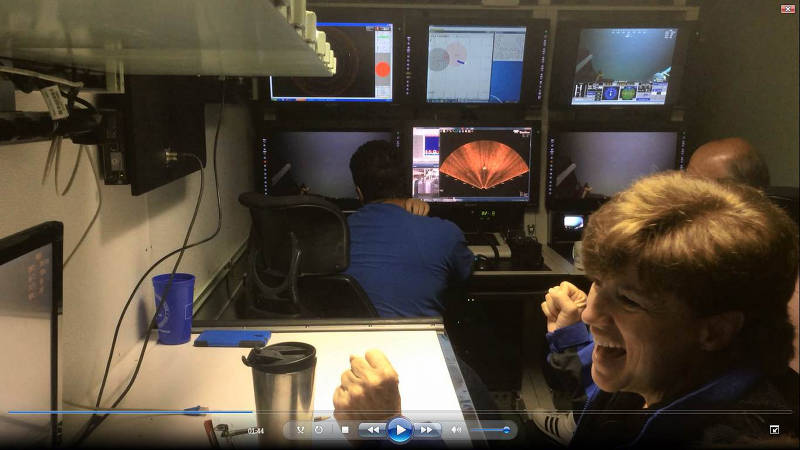
Found it! Image courtesy of NOAA Bioluminescence and Vision on the Deep Seafloor 2015. Download larger version (jpg, 161 KB).
Medusa is back. We found it within a half hour of reaching the bottom. It looked fine but we quickly realized it had dropped its sacrificial weight but was still just sitting there – not a good sign. The only possible way it could have become negatively buoyant was if one of the bottles had flooded or its primary source of buoyancy, the big yellow syntactic foam blocks on top of it, had somehow become water logged.
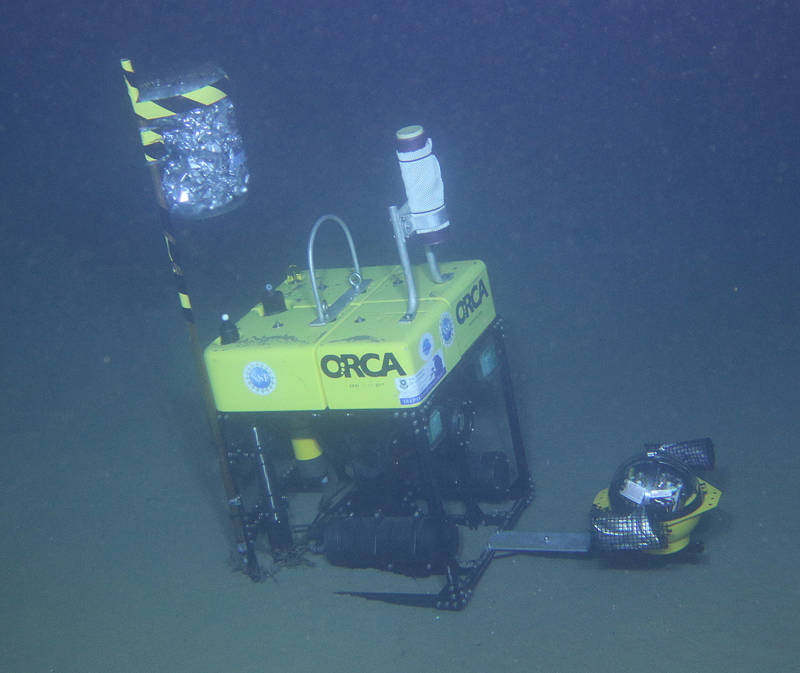
Medusa at 1,914 meters. Image courtesy of NOAA Bioluminescence and Vision on the Deep Seafloor 2015. Download larger version (jpg, 345.2 KB).
To bring it up, Tony and Jamie maneuvered to grab it with the remotely operated vehicle (ROV) claw and then just hauled it up with the ROV. The transfer between the ROV and the boat at the surface was the tricky bit and could have been dicey if the sea state weren’t so calm.
Once on deck, we first confirmed that none of the bottles were flooded, which left the syntactic foam. There were some obvious creases and cracks that hadn’t been there before the deployment, so we removed the blocks and weighed them. In air, all four together should weigh 70 pounds; but we found they now weigh 130 pounds. That’s a bummer and means the blocks are now useless and will have to be replaced at the cost of many thousands of dollars. I’d like to figure out something creative to do with the old blocks rather than just throw them out since they were once caressed by the first giant squid to ever be filmed in the deep sea. Any ideas?
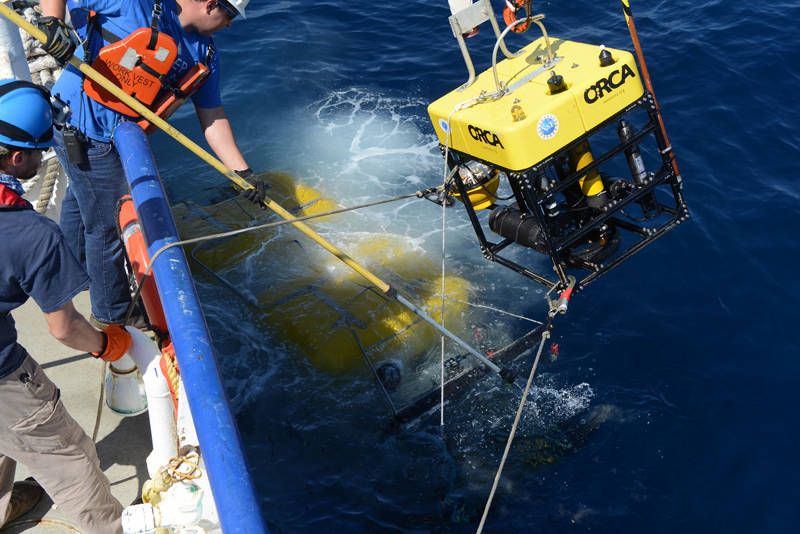
Handoff of the Medusa from the ROV to the ship. Image courtesy of NOAA Bioluminescence and Vision on the Deep Seafloor 2015. Download larger version (jpg, 390 KB).
Thankfully, the Medusa managed to capture good video while on the bottom. There are still many hours of video to analyze, but so far we have seen rattail fish, giant isopods, crabs, and shrimp all with lovely big eyes.
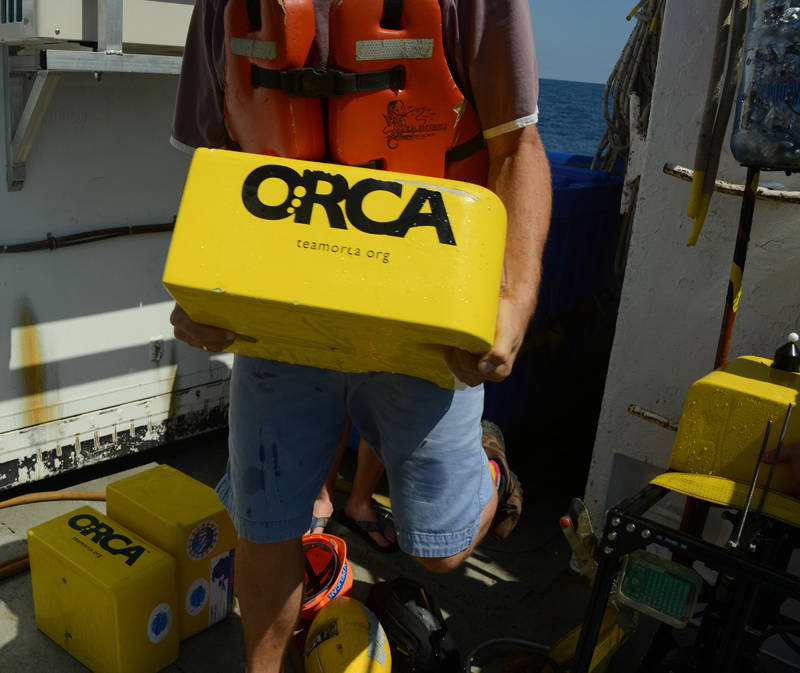
Removing syntactic foam blocks from Medusa to weigh. Image courtesy of NOAA Bioluminescence and Vision on the Deep Seafloor 2015. Download larger version (jpg, 326.2 KB).
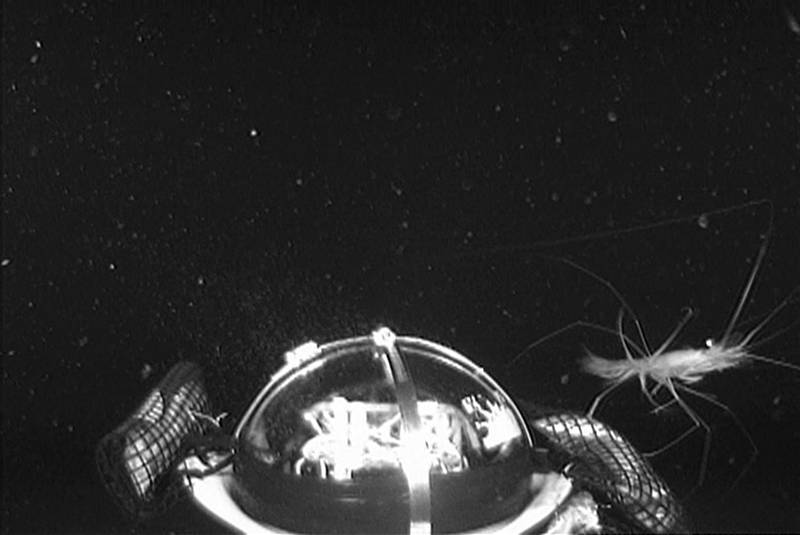
Still frame of a deep-sea shrimp Plesiopenaeus from last Medusa deployment. Image courtesy of NOAA Bioluminescence and Vision on the Deep Seafloor 2015. Download image (jpg, 83 KB).
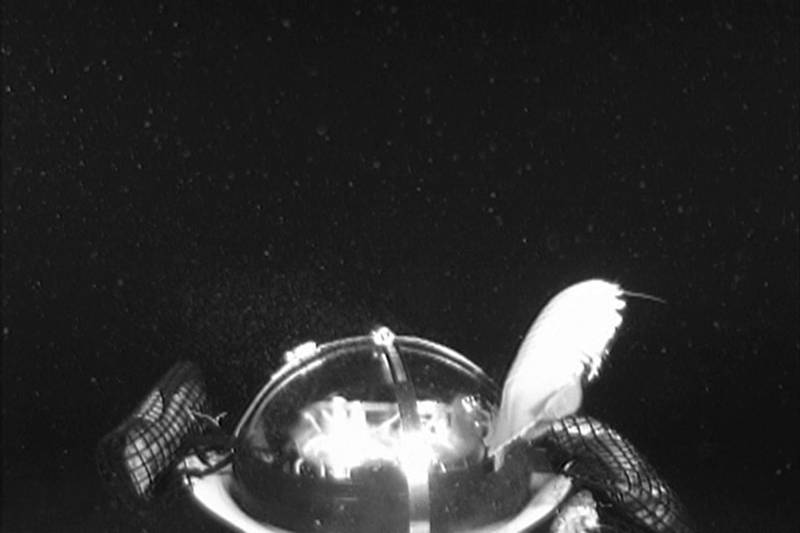
Still frame of the giant isopod Bathynomous from last Medusa deployment. Image courtesy of NOAA Bioluminescence and Vision on the Deep Seafloor 2015. Download larger version (jpg, 64.1 KB).
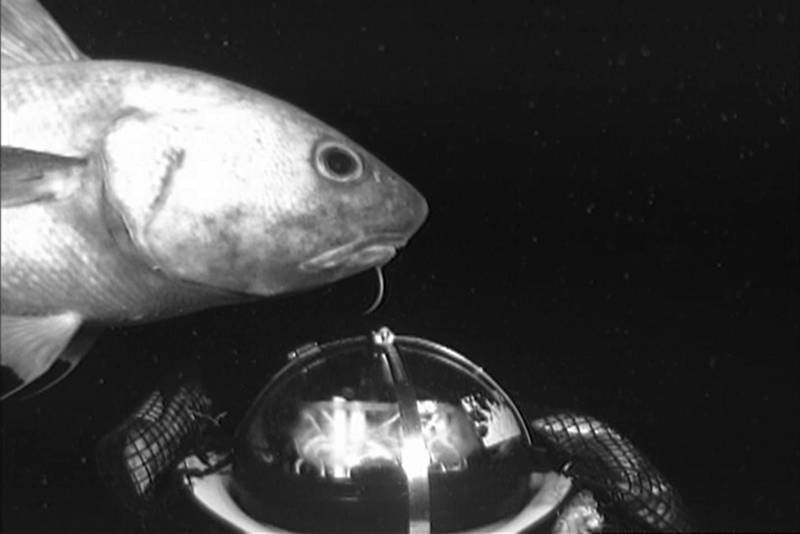
Still frame of a rattail from the last Medusa deployment. Image courtesy of NOAA Bioluminescence and Vision on the Deep Seafloor 2015. Download image (jpg, 55.2 KB).